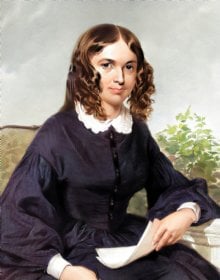The Cry of the Children is a powerful, anti-child labor poem by Elizabeth Barrett Browning. Inspired by a government report on the conditions of young children's labor in mines and factories, the poem exposes the physical and emotional toll industrial life take on young workers and calls for social reform.
 Elizabeth Barrett Browning, born March 6, 1806. Explore her timeless poetry, quotes, and passion for social justice.
Elizabeth Barrett Browning, born March 6, 1806. Explore her timeless poetry, quotes, and passion for social justice.
More about Elizabeth Barrett Browning